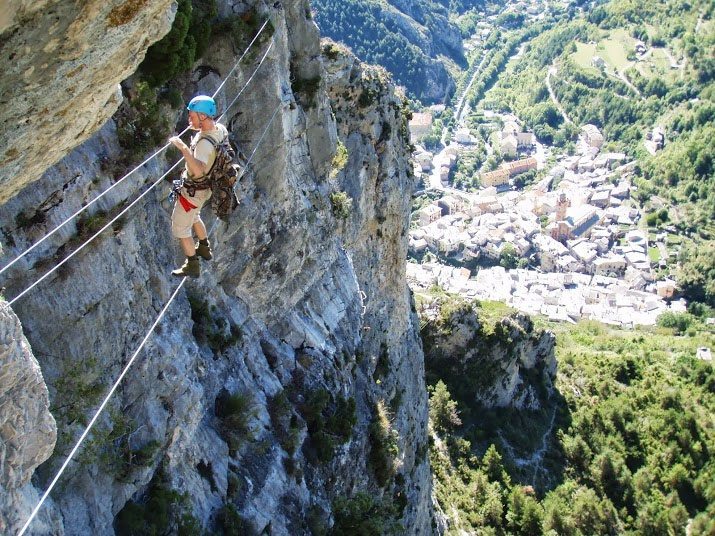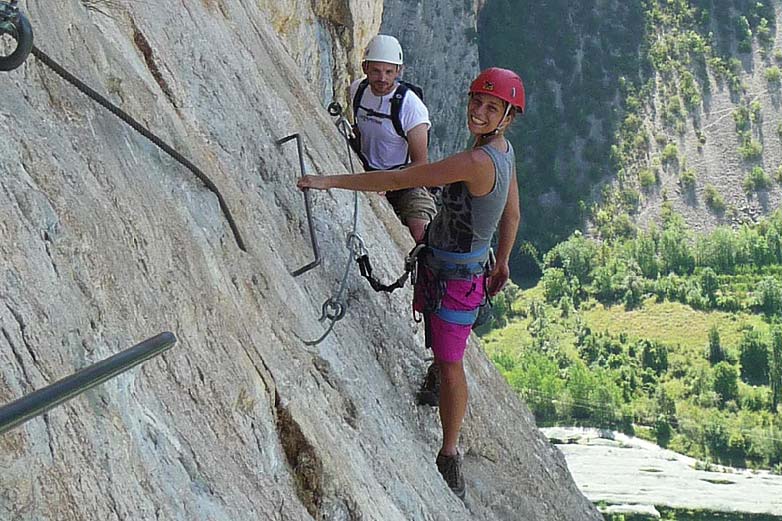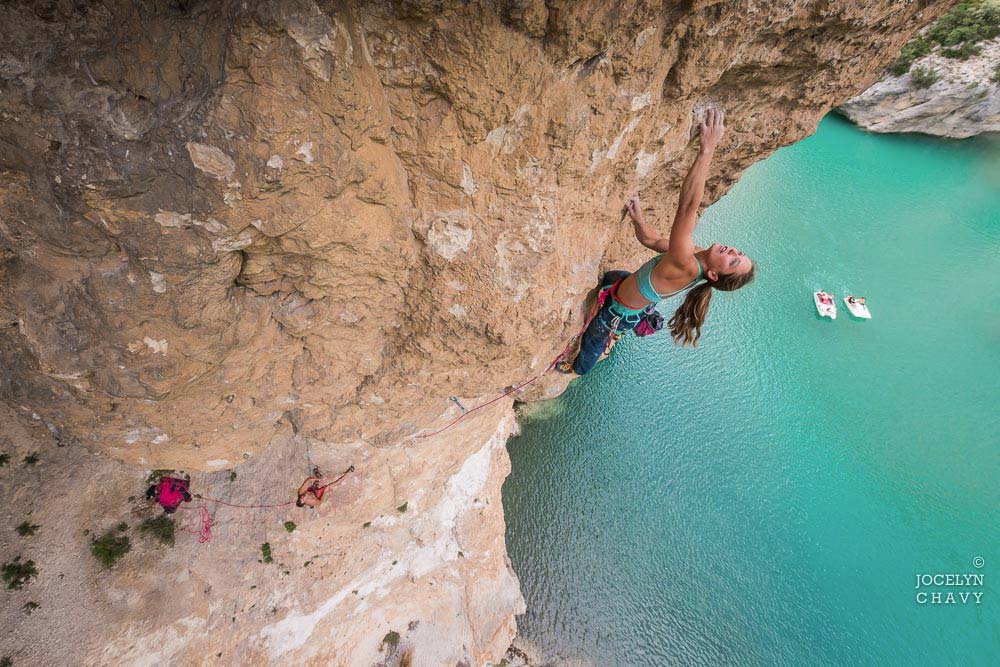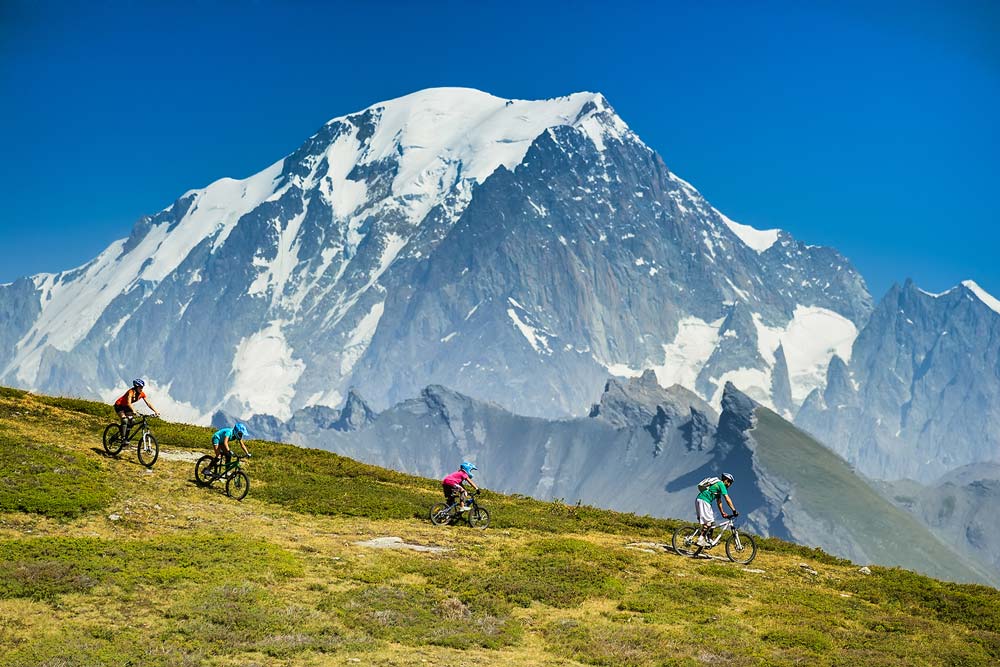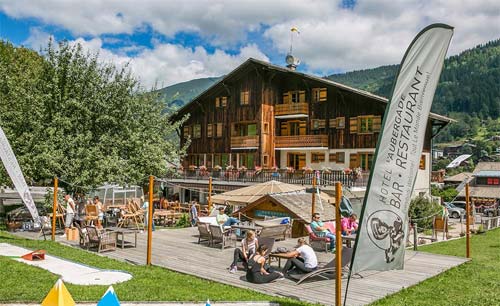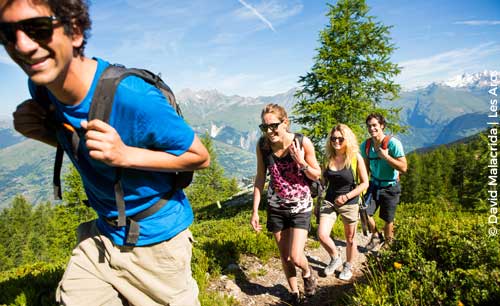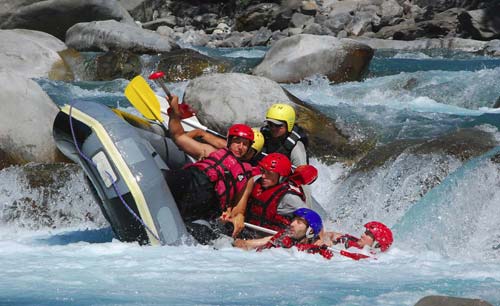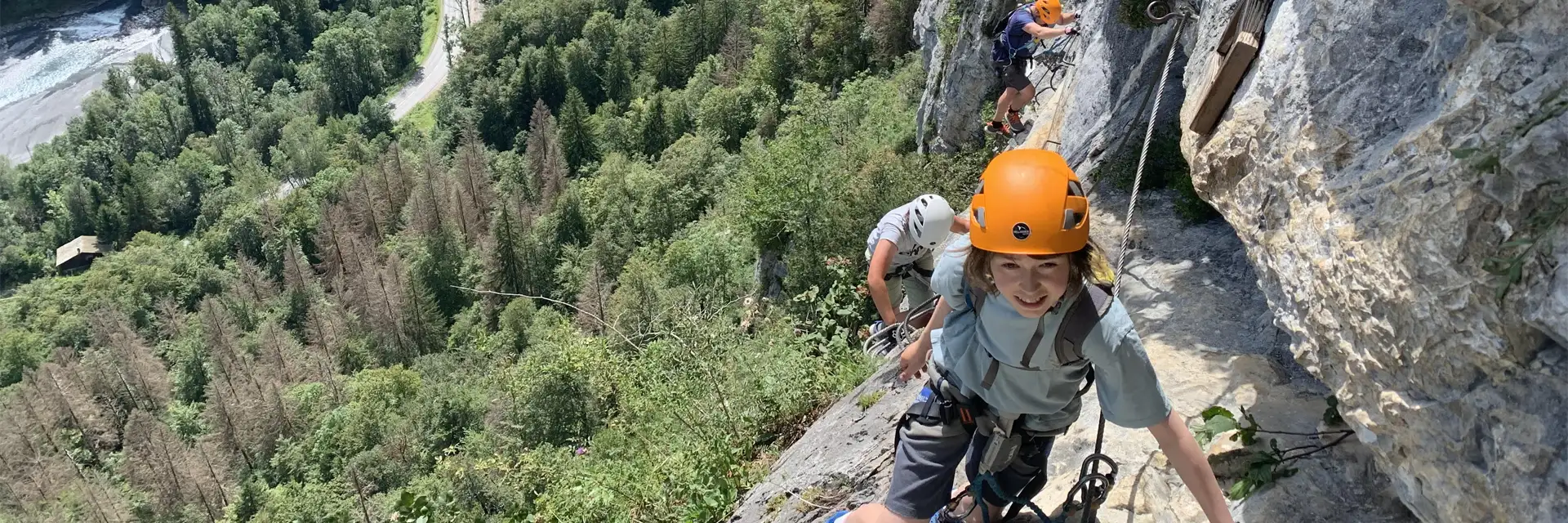
Via ferrata is an exciting mix of mountain hiking and rock climbing. Meaning “iron road” in Italian, you are secured via your climbing harness to a steel cable that is anchored to the mountainside. You can experience the thrill and the exposure of rock climbing without the danger of falling.
Routes snake up the mountain using suspended ladders, bridges and the natural features of the rock to allow you to scale to great heights and access places normally reserved for serious climbers.
Although you need some basic climbing equipment, a good head for heights and basic technique, via ferrata is a great group or family activity. As routes are graded using a scale of easy to extremely difficult, it’s easy to select a course that everyone will enjoy. Routes can take anything from one hour to a full day to complete and in some parts of the Alps, you can even link routes together for an unforgettable multi-day, high-altitude experience.
Check out our pick of the best via ferrata routes across France:
1. Via Ferrata in the South of France
The south of France, with its vertical limestone slabs, has loads of excellent via ferrata routes. And many of those at lower altitudes are accessible year round. Via Ferrata routes in the South of France are known for their huge fun-factor of the routes. Just a few kilometres inland from the Mediterranean coast and you can scale the overhanging ladders of Peille. Head further inland to step up the adventure in the high altitude peaks of the Mercantour National Park.
1. Via Ferrata in the French Alps
The Via Ferrata season in the French Alps begins as soon as the snow melts, typically from late April through early November, offering an exhilarating way to explore the high mountains. These fixed climbing routes, equipped with iron rungs, cables, and suspension bridges, allow adventurers to safely scale dramatic rock faces while enjoying breathtaking alpine vistas. Whether you’re a beginner looking for a thrilling outdoor experience or an experienced climber seeking a challenge, the French Alps offer a variety of routes suitable for all skill levels.
Book a Via Ferrata Trip
Our France via ferrata partners employ experienced guides who are all fully qualified so you can have fun and stay safe. Although if you have the right gear, you can go it alone, if you take a guide you’ll be safer and you’ll have a lot more fun!
France Via Ferrata Guiding
Scale alpine cliffs with a professional guide on a Via Ferrata adventure. Whether you’re new to Via Ferrata or an experienced climber, expert guides will tailor the route to match your skill level and ambition, ensuring a safe and exhilarating journey through stunning mountain landscapes.
Traverse dramatic rock faces, cross suspension bridges, and ascend vertical ladders—all while securely clipped to a fixed cable system. With top-tier equipment and knowledgeable instructors prioritising your safety and enjoyment, there’s no better way to experience the mountains. Book your Via Ferrata adventure today!
Preparing for your Via Ferrata trip
Via Ferrata in the French Alps offers an exciting way to explore the mountains, blending the thrill of rock climbing with the security of a fixed cable system. Whether you’re a beginner or a seasoned adventurer, proper preparation will ensure a safe and enjoyable experience. Here’s what you need to know before setting off on your Via Ferrata adventure.
What do I need to bring?
Having the right gear is essential for a comfortable and safe Via Ferrata experience. If you’re booking a guided trip, most technical equipment will be provided, but you should bring:
- Climbing harness & Via Ferrata lanyard (usually included in guided tours, but check in advance)
- Helmet (provided on guided trips, or bring your own for a perfect fit)
- Gloves (fingerless or lightweight climbing gloves for grip and protection. I use fingerless cycling gloves)
- Hiking shoes or approach shoes (sturdy with good grip, avoid flimsy sneakers or sandals)
- Comfortable, weather-appropriate clothing (avoid loose or baggy clothing that could get caught on equipment)
- Small, well fitting backpack (for water, snacks, and an extra layer). Read our reviews of some of the best small backpacks.
- Plenty of water & high-energy snacks (routes can take a few hours, and hydration is key)
- Sun protection (hat, sunglasses, and sunscreen if climbing in exposed areas)
If you’re heading out without a guide, make sure you have a Via Ferrata set, including a lanyard with energy-absorbing system, two carabiners, and a climbing harness. You can often hire these from sports shops or tourist offices in local towns.
Do I need rock climbing experience to Do Via Ferrata?
No, you don’t need prior rock climbing experience to enjoy Via Ferrata! These routes are designed to be accessible, with iron rungs, ladders, and cables helping you ascend safely. However, a basic level of fitness and confidence with heights will make the experience more enjoyable. Many beginners find Via Ferrata to be a fantastic introduction to vertical adventures, offering the thrill of climbing without the technical skills required for traditional rock climbing.
How much time do I need to set aside for a Via Ferrata trip?
The duration of a Via Ferrata experience varies depending on the route’s length and difficulty. Most guided trips last between 2 to 5 hours, including time for a safety briefing and gearing up. Some shorter routes can be completed in 90 minutes, while longer, more challenging routes may take half a day or more.
If you’re planning your own trip, factor in additional time for approach hikes and descents, as some routes start and finish in remote alpine locations.
Is Via Ferrata Suitable for Kids?
Yes! Via Ferrata is a great adventure for families, but there are age and height restrictions for safety reasons. Most routes allow children aged 12 and above, provided they meet the minimum height and weight requirements to use the safety equipment correctly. If you’re planning a family trip, opt for easier routes graded for beginners to ensure an enjoyable experience for younger adventurers.
Should I Go with a Guide or Solo?
While experienced climbers may feel comfortable tackling Via Ferrata independently, beginners or those unfamiliar with the area should consider booking a guided trip. A professional guide will provide:
- Technical equipment and ensure it’s correctly fitted
- Safety instruction and climbing techniques
- Route selection tailored to your ability
- Local knowledge of weather conditions and terrain
Going with a guide is especially recommended for first-timers or those attempting more difficult routes.
Ready to Take on the Challenge?
With the right preparation, Via Ferrata offers an unforgettable way to explore the breathtaking landscapes of the French Alps. Whether you’re seeking an adrenaline rush or a scenic climb, there’s a route suited to your ability. Book your Via Ferrata adventure today!
Please leave a comment below if you need specific advice for your via ferrata trip in France, or if you have any recommendations to help us improve this article. Bonnes vacances !

